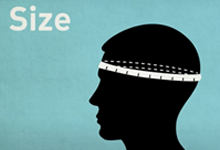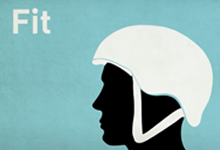
You wouldn’t hike barefoot (we hope). So why would you bike, skate, play football or ride a horse without a helmet?
The Center for Disease Control and Prevention estimates that about 1.5 million Americans survive a traumatic brain injury every year, and 176 people a day die from TBI.
“There is no such thing as a concussion-proof helmet, but helmets protect people from serious head and brain injury,” said Andrew Ly, M.D., neurologist and advisor for Hoag’s Concussion and Mild Traumatic Brain Injury Program, part of the Pickup Family Neurosciences Institute.
“Helmets are like seat beats for you brain, they protect you from greater injury and can be lifesaving.”
The key, Dr. Ly said, is to make sure your helmet is the right type for the sport, fits well and is in good condition.
To select the helmet that is right for you, Dr. Ly recommends people get acquainted with the CDC’s S.A.F.E. checklist:
 Size. Using a soft tape measure, measure the circumference of the wearer’s head above the eyes and ears. Use that measurement to determine what size helmet to wear.
Size. Using a soft tape measure, measure the circumference of the wearer’s head above the eyes and ears. Use that measurement to determine what size helmet to wear.
 Ask. Once the helmet is on, ask how it feels. If it sits snug with no space between the padding and the head, it’s a good fit. Be sure the wearer can see forward and to the sides.
Ask. Once the helmet is on, ask how it feels. If it sits snug with no space between the padding and the head, it’s a good fit. Be sure the wearer can see forward and to the sides.
 Fit. The helmet should fit snug, without slipping forward or side to side.
Fit. The helmet should fit snug, without slipping forward or side to side.
 Evaluate. Once the chin strap is snapped, have the wearer give an exaggerated yawn. If the helmet pulls down on the head, you’re good to go!
Evaluate. Once the chin strap is snapped, have the wearer give an exaggerated yawn. If the helmet pulls down on the head, you’re good to go!
Concerned you might have a concussion or want to learn more about your risks? Reach out to a Hoag physician at www.hoag.org.
Images are from the CDC.









